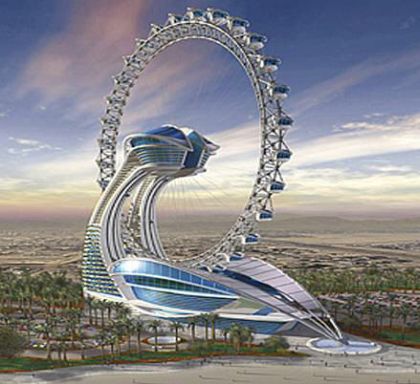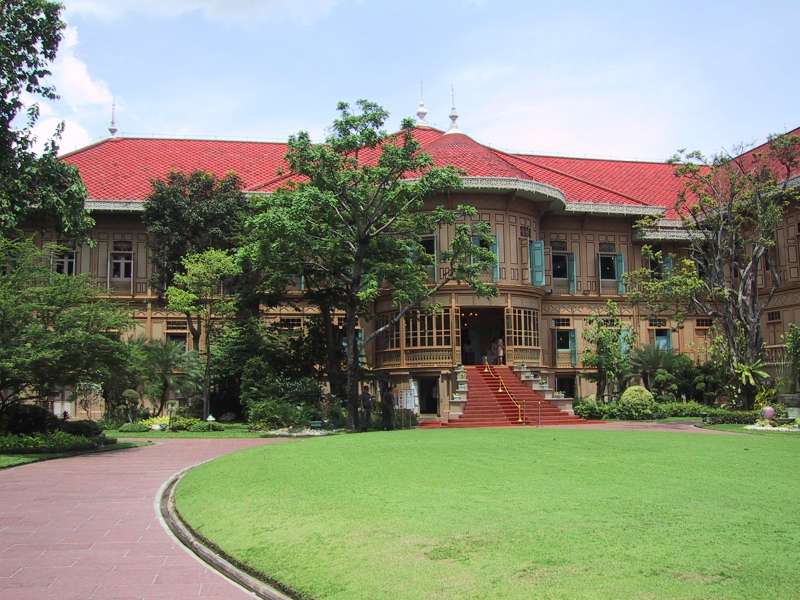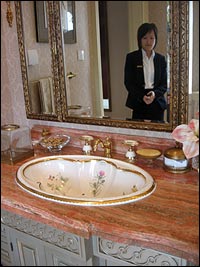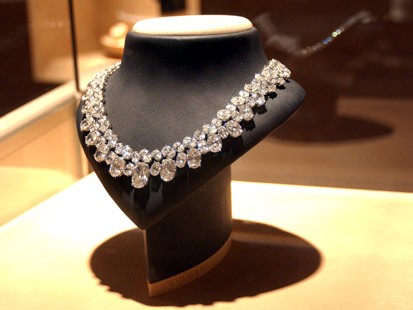
Tired of the same old, boring luxury hotels and resorts? Well you love what is under development. I’ve listed the Top 10 futuristic, luxury hotels and what a list it is. Amazing architecture, ambiance and decor. Sit back and make your vacation plans for the ultimate in luxury hotels. And now …. the Top 10 !
10. The Apeiron Island Hotel
Designer: Sybarite
Status: Concept
Estimated project cost: $500million
The ‘Apeiron’ island hotel is a seven star resort with a total floor area of 200,000m². It is 185-m high and boasts of over 350 luxury apartment suites. The hi-tech futuristic hotel screams of luxury and comfort with its own private lagoon, beaches, restaurants, cinemas, retail shopping, art gallery, spas and conference facilities. It’s out of the world design is magnetic enough to deliver a spell-bounded experience to visitors.
9. Foldable Hotel Pods
Designer: M3 Architects, London
Estimated project cost: $72 to $104 million
The foldable and fully transportable pods are for those traveling geeks who find it hard to shun all the amenities of their luxurious life. You can move the pods to exotic locations around the world and the amazing concept abodes will come with ‘Active’ walls and floors where guests can focus images of their choice and a disposable unit to care of all waste.
8. The Hotel Burj al-Arab
Location: Dubai, United Arab Emirates
Designer: Tom Wright (WS Atkins PLC), Khuan Chew
Status: Complete
Estimated project cost: $650 million
Cost per person: $1,000 to over $28,000 per night, $75 to have a glimpse from inside
Considered, unofficially, the world’s first and only 7-star hotel, the Burj al-Arab is a truly the most luxurious hotel imaginable and hence we couldn’t help including it in this list of futuristic hotels, which also perhaps triggered architects around the world to look beyond the fence.
The tallest, 321-metres (1,053 ft), hotel, designed as a sail of a dhow, is constructed on an artificial island 280-metres (919 ft) out from Jumeirah beach. The hotel boasts of the world’s tallest atrium, which is 180-meters (590 feet) tall.
The suspended helipad on the top adds to the grandeur of the hotel. The lavish interior skillfully mingles the best of design ethics from both the east and the west. The 8,000 square meters of 22-carat gold leaf and 24,000 square meters of 30 different types of marbles give the hotel an enigmatic touch.
The 28 double-story floors of the hotel accommodate 202 luxury suites with prices ranging from $1,000 to over $28,000 per night (for the Royal Suite). The hotel also features 8 restaurants, including bars and lounges, latest business, conferencing, fitness and recreational facilities. Carved in the midst of white beaches and the blue waters of the Arabian Gulf, the Burj Al Arab is a dream come true.
7. Waterworld
Location: Songjiang, China
Designer: Atkin’s Architecture Group
Status: Concept
This spectacular design by Atkin’s Architecture Group deservedly won the first prize award last year in an international design competition. The 400-bed resort hotel features underwater public areas, guest rooms, cafes, and restaurants. The major attraction is the extreme sporting facilities including a luxurious swimming pool, rock climbing and bungee jumping.
What more to say, the pictures are screaming BLISS. (Photo Credit: TheCoolHunter)
6. The Poseidon Undersea Resort
Location: Fiji, The Poseidon Mystery Island
Designer: Bruce Jones
Status: Under construction, will be completed by September 2008
Estimated project cost: $105 million
Cost per person: $15,000 per week
Our pursuit of unique spaces now goes straight 1,200-square feet under the sea in the lap of Poseidon undersea resort. The world’s first underwater resort will be ready by the end of next year with breathtaking coral reefs where you can literally immerse yourself.
Surrounded by 5,000-acre lagoon, the Bruce Jones’ Poseidon Mystery Island offers luxurious 550 square feet large suites.
Not only this, the Poseidon Resorts website says, “the first 1,000 guests will have their names permanently inscribed on two monuments one on the island, and one on the floor of the lagoon.” Now, that’s incredible!
Tourists can indulge in submarine piloting, deep reef excursions, scuba diving, sea track on the sea floor, water sports, para-sailing, cave exploration, and much more.
5. The Hydropolis: A self-acclaimed 10-Star Underwater Hotel
Location: Dubai
Designer: Joachim Hauser, Crescent Hydropolis Resorts
Estimated project cost: $500-million
The Hydropolis Undersea Resort, especially designed keeping in mind that we’re around 60% water, endeavors to deliver the serene beauty of the ocean in its true colors. The one of its kind resort will encompass a whopping 1.1-million-square-foot of area offering shopping mall, ballroom, island villas, restaurant, high-tech cinema and surprisingly, a missile-defense system for your security 60-feet underwater.
Tourists can enjoy their stay in 220 theme suites within the submarine leisure complex. It is one of the largest contemporary construction projects in the world, covering an area of 260 hectares, about the size of London’s Hyde Park.
The resort is designed with a petal-like retracting roof to organize open-sky events.
Around 150 firms are involved in the project, which is expected to complete this year if all technical, land, and financial challenges are met, but it’s delayed as per the latest reports. Following the line and determined of the success of the Hydropolis, Crescent-Hydropolis is now planning a chain of underwater hotels around the world.
4. The Lunatic Hotel: Hotel on the Moon
Designer: Hans-Jurgen Rombaut, Wimberly Allison Tong & Goo (WATG)
Status: Blueprint ready, will take real shape by 2050
Orbiting in space seems more thrilling but Moon brings in a nostalgic aura. Perhaps, the Lunatic Hotel concept will serve it all with spectacular views sprinkled with joys of low gravity and an alien feeling. Designer Hans-Jurgen Rombaut of the Rotterdam Academy of Architecture in the Netherlands is quite optimistic to complete the dream project by 2050.
The ‘sensation engine’, as the designer calls it, will allow tourists to indulge in low-gravity games with the help of two 160-meters high slanting towers. The towers will be equipped with teardrop-shaped ‘habitation capsules’ which will serve as spaceship like suits for tourists.
The 50-cms thick hull made of Moon rock and layers holding water will protect inhabitants from the harsh lunar environment including extreme temperatures and lethal cosmic rays and solar particles. If the whole concept comes out successful, we can expect a real lunar village too. (Photo Credit: NASA)
3. Aeroscraft: The flying luxury hotel of tomorrow
Designer: Igor Pasternak (Worldwide Aeros Corporation), Wimberly Allison Tong & Goo (WATG)
Status: Prototype under development
The ‘Aeroscraft’ is a gigantic 400-ton blimp designed to carry passengers in its spacious luxury cosmos onboard. The flying hotel with an area equal to two football fields hangs in air with 14 million cubic feet of helium, huge electric and hydrogen fuel cell powered propellers and six turbofan jet engines. The hotel can accommodate 250 passengers driving them at a speed of 174 miles per hour up to 6, 000 miles.
Flying 8,000 feet above in the air, the 165×244×647 feet airship will provide tourists hi-tech amenities including casino, restaurants and staterooms.
Designer Igor Pasternak has also plans to float a cargo-carrying version too once the project takes off. (Photo Credit: WATG)
2. Galactic Suite
Designer: Xavier Claramunt of ADD+ARQUITECTURA
Status: On hold, prototype is ready
Designer Xavier Claramunt has tried to imbibe things especially to whet a adventurer’s dream with the Galactic Suite which will have around 22 rooms, measuring 7X4 meters, free of straight lines or angles and huge windows. It is termed as the first global project of its kind, next to Robert Bigelow’s space hotel. Different capsules will act as bars, restaurants, reception, and more.
The prototype is still waiting for investors to shell out their fortunes to make this project a reality.
1. Commercial Space Station Skywalker: The inflatable space hotel
Designer: Bigelow Aerospace, Las Vegas
Location: 515-kms above Earth
Status: The human space complex will be accessible by 2015
Estimated project cost: $500 million
Cost per person: $1 million a night
Certainly, we’ll have to stop this constant to and fro journey and make space our permanent base. And to make this a reality, the assembling of ‘CSS Skywalker’ kicked off with the launch of ‘Genesis I’ from Russia mid last year. Solar cells will power the inhabitable complex made of various sections that will inflate to take their real form in space. The sections or rooms of the CSS will allow rockets to dock. In future, the modules will be used as basis for space yachts and moon cruisers.
With a volume of 1,500.00 m3 and mass of 100,000 kg, the CSS Skywalker will have a maximum diameter of 30.00 m (98.00 ft).
The concept is a big challenge while it tests inflatable technology and fights to survive in hazardous conditions. Hope it’s made to face the wrath of the meteorites, though the hull of each module is made of three protective layers with an outer 18-inch-thick shield made of alternating woven graphite composite and foam to protect against orbital debris. (Photo Credit: CNet)
Watch List: The Diamond Ring Hotel
Location: Abu Dhabi
The Diamond Ring hotel is just a concept right now, but looks to be an amazing resort. We’ll keep you updated as new information about this hotel becomes available.


 Mr. Jenkins says the new development will include hotels, golf courses and homes for about 20,000 people, stretching over 10 square miles, when it’s completed. “It’s like Vegas, Monte Carlo and Taos, all rolled into one,” he says.
Mr. Jenkins says the new development will include hotels, golf courses and homes for about 20,000 people, stretching over 10 square miles, when it’s completed. “It’s like Vegas, Monte Carlo and Taos, all rolled into one,” he says.




